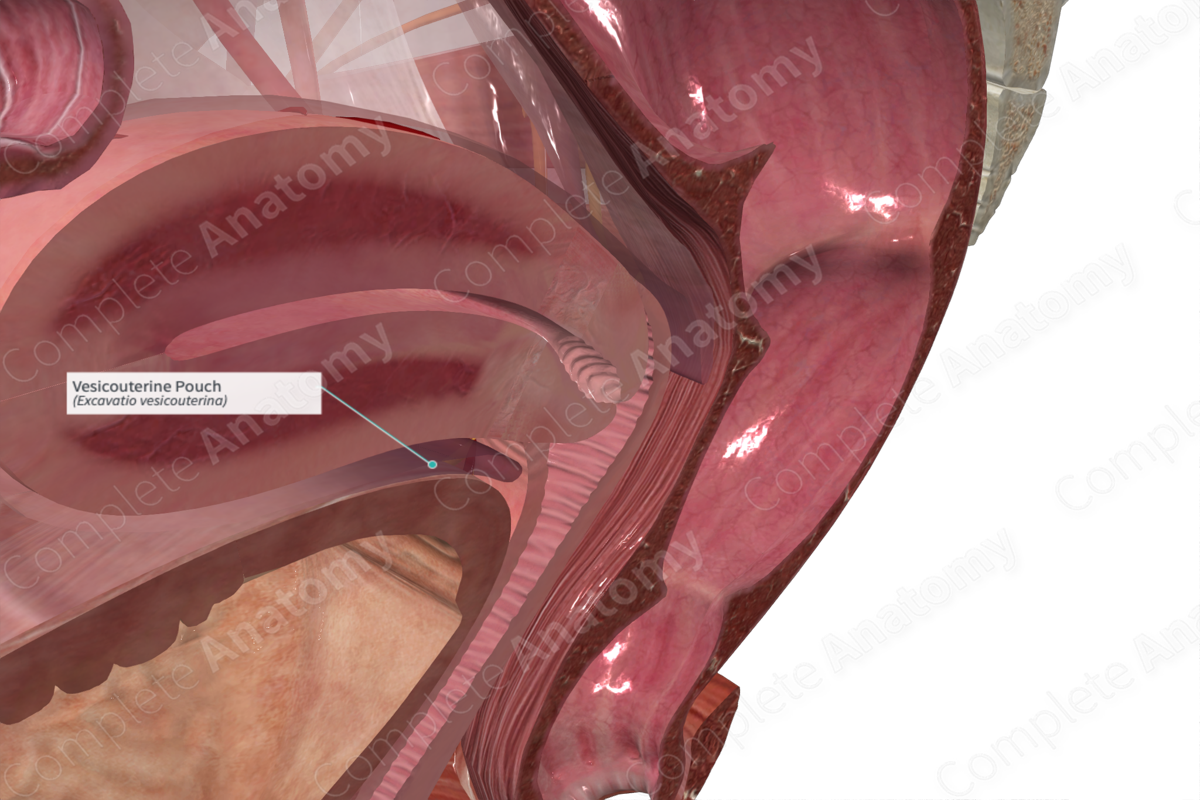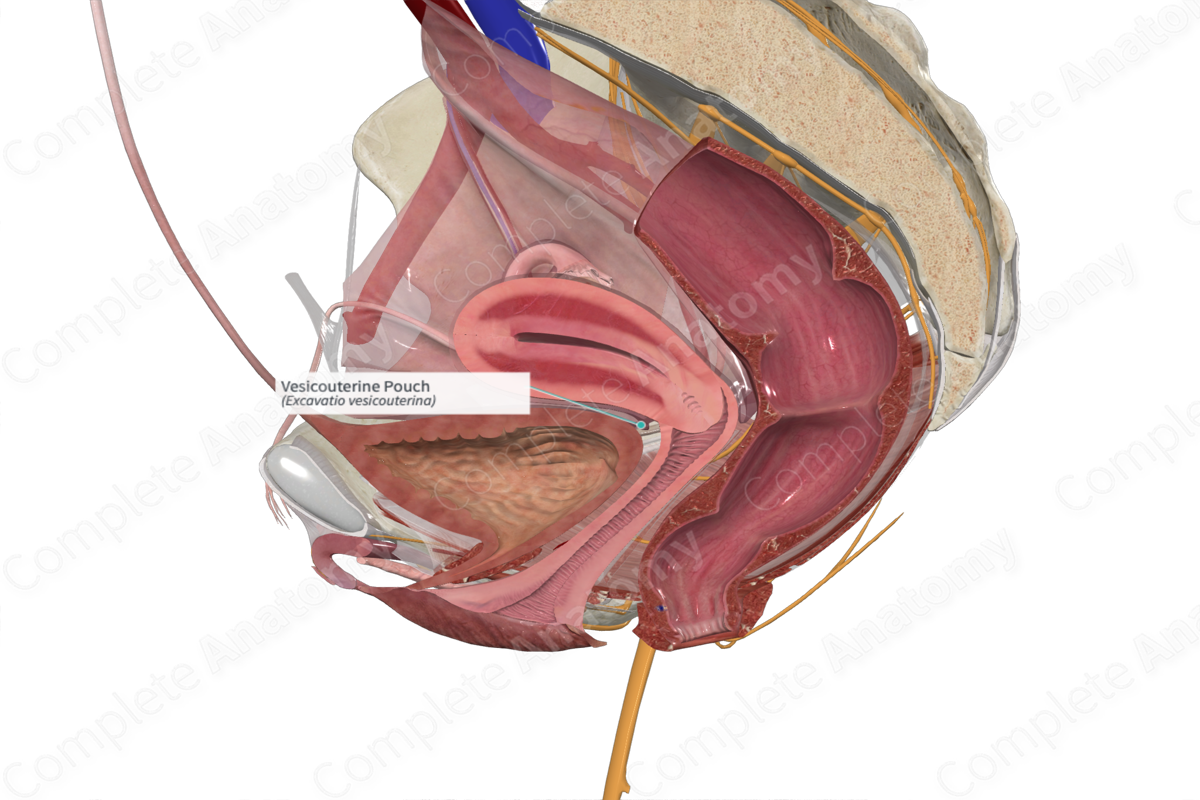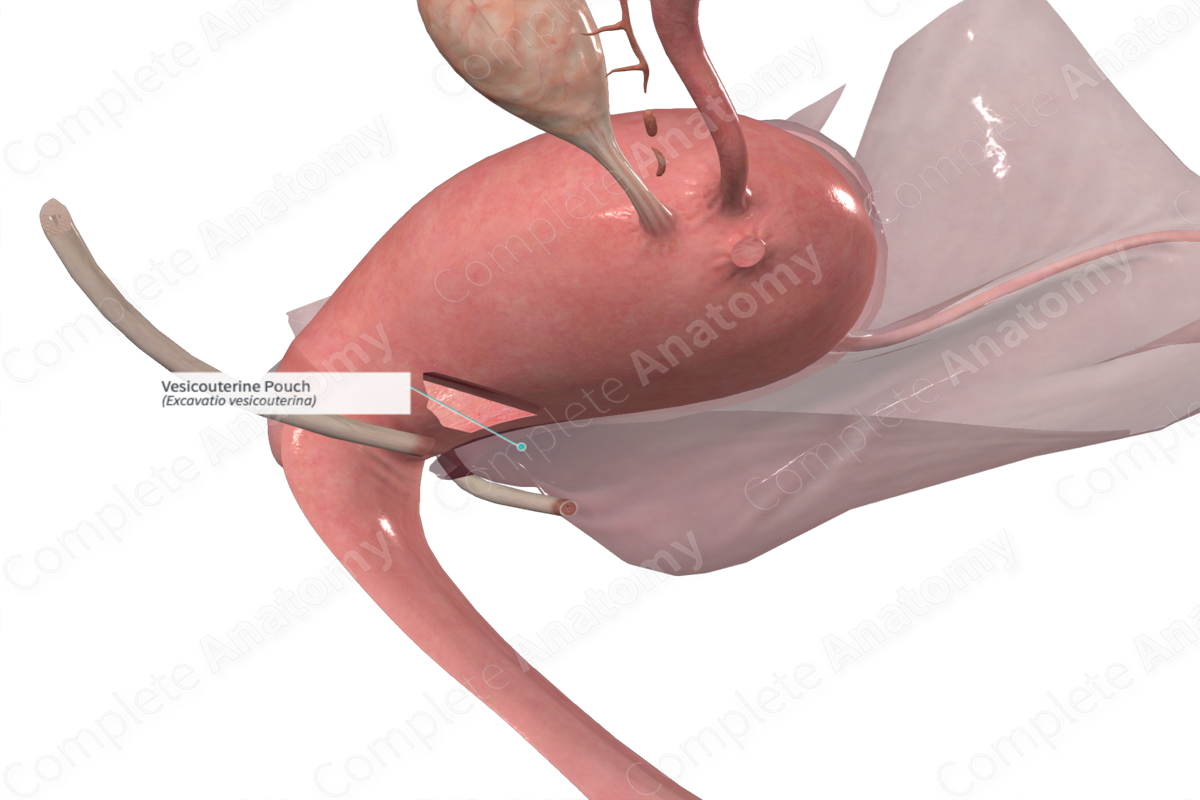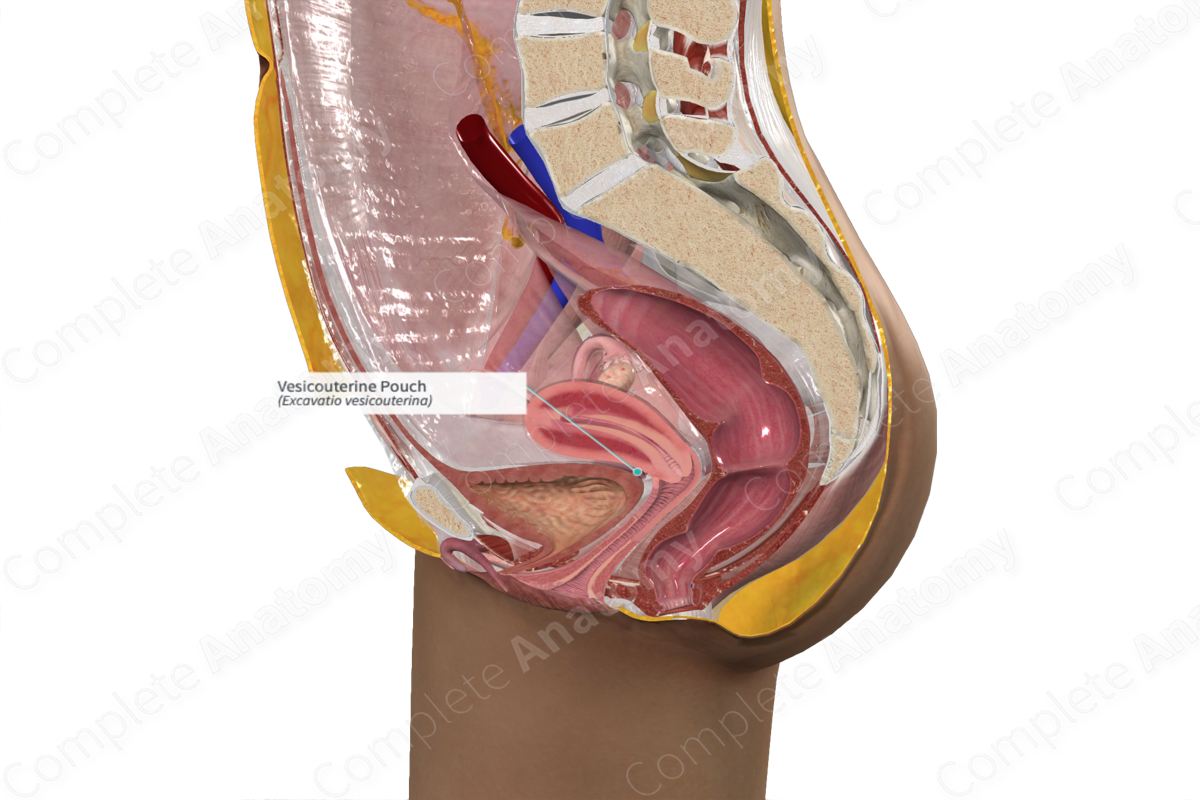
Vesicouterine Pouch Structure
The peritoneum is a complex, continuous serous membrane consisting of a layer of mesothelium and varying degrees of connective and adipose tissue. Visually, it is largely unremarkable, smooth, and has a lubricated surface due to the presence of peritoneal fluid.
Vesicouterine Pouch Anatomical Relations
This vesicouterine pouch is only present in females. It is the space resulting from the peritoneum reflecting from the anterior surface of the uterus at the isthmus, onto the posterior aspect of the bladder (Moore, Dalley and Agur, 2013). The reflection is just superior to the supravaginal cervix and, therefore, sits more superior than the rectouterine pouch and as a result is much shallower. The peritoneum continues anteriorly as the peritoneum of the bladder, across its superior surface. The ureters run lateral to the vesicouterine pouch before they reach the bladder.
Vesicouterine Pouch Function
This vesicouterine pouch decreases direct contact friction between the uterus and the bladder.
Vesicouterine Pouch List of Clinical Correlates
—Ascites
—Endometriosis
Vesicouterine Pouch References
Moore, K. L., Dalley, A. F. and Agur, A. M. R. (2013) Clinically Oriented Anatomy. Clinically Oriented Anatomy 7th edn.: Wolters Kluwer Health/Lippincott Williams & Wilkins.



